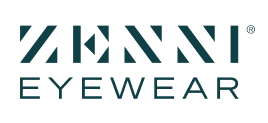Before Slack, India-based creative and technology transformation agency Schbang made do with WhatsApp to communicate. They got by this way back when they were a team of 50 in 2015. But as the team expanded to 800 people spread across Mumbai, Delhi and Bangalore, the omnipresent ping of WhatsApp notifications became truly problematic.
“I had around 120 work groups on WhatsApp,” says Pranav Krishnan, Schbang’s Head of Culture and Communication. “My phone was buzzing throughout the day and night. My personal life was deprioritised.”
Staff were feeling the strain too. “My team was telling me they weren’t experiencing good work-life balance and that they were struggling with productivity,” he says. “We knew we needed a new way forward.”
Moving collaboration out of WhatsApp and into channels
Over six months, Schbang trialled WhatsApp alternatives like RocketChat, Flock, Google Chat, Microsoft Teams and a system developed in-house. The tool it wanted needed to be secure, enable collaborative teamwork and unite the company. And critically, it needed to help the team switch off when the working day was over.
After comparing all these tools, it was clear Slack met Schbang’s needs in a way that other platforms couldn’t. Some key features that helped Slack win out include:
- Goodbye, siloes. Asking for information and sharing work was convoluted on WhatsApp. In contrast, Slack’s searchable public channels made accessing conversations and files easy.
- Switching off from work: Slack empowers Schbang staff to turn off notifications at the end of the day or pause them when they need to focus. They’re not getting bombarded with WhatsApp messages every hour of the day.
- Mandatory security clearances. Enterprise-grade security is built into every layer of Slack, including the clearances they needed to sign on new clients. Even better, Schbang didn’t have to manually remove ex-employees or external vendors they no longer used.
“Work remains work and life remains life. To make that distinction in a digital-first world was important.”
Building a digital space where creativity can thrive
Slack helped Schbang’s distributed workforce boost creativity and cut turnaround times. They started by streamlining creative briefing using Workflow Builder, allowing them to design customisable, no-code workflows to automate routine tasks into repeatable processes.
“Remote collaboration has improved because creative teams use workflows, which are essentially briefs,” says Krishnan. These systems work because there’s a lot more clarity on what needs to be done and nothing is left unclear.”
And everyone benefits from better team communication. Take Slack Huddles—a lightweight, audio-first way to start live conversations without having to schedule meetings. Schbang’s client teams can quickly huddle with the creative team to discuss client feedback or problem-solve in real time, using the drawing feature to circle areas on the screen to talk through issues.
Having everything in one place blitzes turnaround times
“Before Slack, client turnarounds took around three days. Now, it’s down to about two,” says Krishnan.
Designers don’t need to waste time uploading assets to multiple drives. Slack’s storage means they can share them directly to the platform (without having to degrade high-res images). And the relentless back-and-forth communication that used to happen in different WhatsApp chats is no more. Teamwork now happens in threads, meaning the team can discuss topics in more detail without adding clutter to a channel.
“Before Slack, client turnarounds took around three days. Now, it’s down to about two.
“Think of a creative or a UI change or a thought being discussed on a single thread,” says Schbang founder Harshil Karia. “Keeping comments to that single thread means you can easily go back to it and trace the history. No miscommunication.”
Building a stronger rapport with clients
Slack has transformed how Schbang works with clients. It uses Slack Connect, which offers a faster way to remotely collaborate with outside organisations by moving conversations out of siloed email threads and into Slack channels.
The Schbang team uses Slack Connect with around half of their clients, meaning they can work at the speed of their clients. For example, clients now share briefs in the threaded format making it easier for everyone to understand the context. With Slack, Schbang can integrate apps its clients already use, like video conferencing platforms. There’s no confusion about which platform to schedule a meeting on!
Engineering a complete cultural transformation
At Schbang, Slack Channels have been a game-changer for building connections across different offices. “We have a lot of channels for collaboration,” says Krishnan. “For example, we have a channel called daily inspiration where we send a short snippet of all the inspiring work we do every single day.” Schbang has automated onboarding too, designing workflows that send new-starters induction podcasts featuring team leaders.
Company-wide memos are no longer scattered across WhatsApp chats. Through Slack, they finally have one channel for reaching everyone. And if anyone needs to ask a question, says Krishnan, they simply pop it in the relevant Slack channel, and someone will respond in minutes.
“I can’t imagine my work life without Slack. I don’t think the founders can either. Their phones have stopped buzzing excessively,” says Krishnan.















